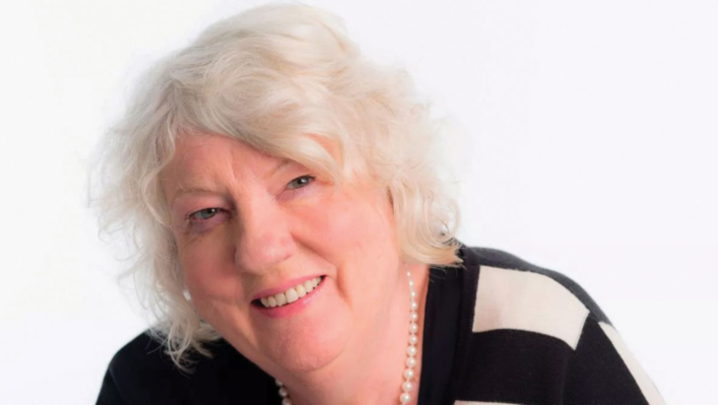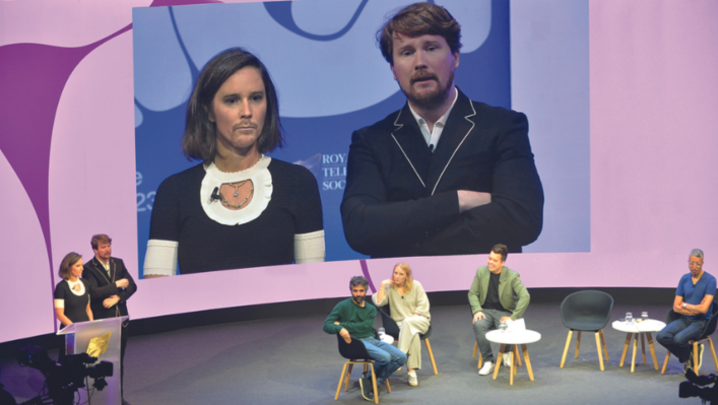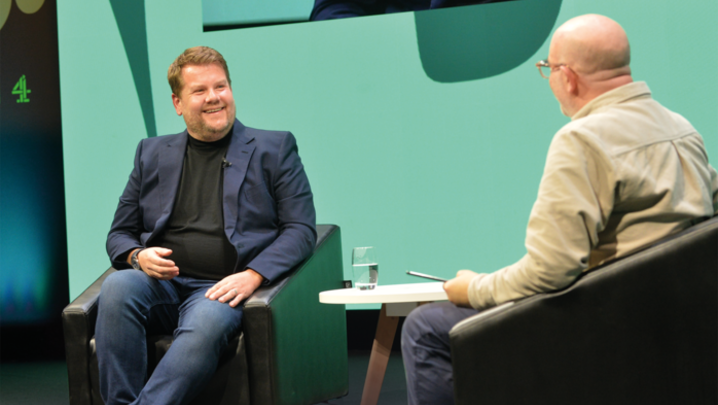Matthew Bell discovers how European producers and broadcasters struck new alliances for Amazon’s lavish new drama Leonardo.
It’s a brave film-maker who takes on the story of the Renaissance master Leonardo da Vinci. Can their treatment hope to measure up to the real figure who – for starters – painted the world’s most famous canvas, designed flying machines and was a ground-breaking anatomist and scientist.
“He was such a towering genius, so good at so many things, it’s actually hard to believe he was real,” says Frank Spotnitz, the driving force behind the Amazon Prime drama Leonardo, which launches in the UK and Ireland this month. “You have to make him credible, but also not trivialise him or make his genius mundane or silly.”
Leonardo has featured in many fictional works, including novels, TV shows, video games and movies. Yet, only two major TV series have been made in half a century: RAI’s Golden Globe-winning 1971 biopic La Vita di Leonardo Da Vinci; and the BBC’s 2003 semi-dramatised documentary, Leonardo, starring Mark Rylance.
The new eight-part series – made on a hefty E30m budget – is a triumph of European co-operation, involving Spotnitz’s company, Big Light Productions, Italian producers Lux Vide and RAI Fiction, France Télévisions, Spain’s RTVE, Germany’s ZDF and Sony Pictures Television.
Despite its pan-European origins, Leonardo is anything but a stodgy, uninspiring “euro pudding”. The series looks beautiful, with cinematographer Steve Lawes using the light available to Leonardo – daylight and moonlight from outside, candlelight and firelight inside – to shoot the series. The performances are convincing and Poldark hunk Aidan Turner impresses as the obsessive, troubled painter.
Spotnitz, who wrote more than 40 episodes of The X-Files, left Los Angeles to make the BBC drama Hunted in 2010, relocating permanently to Europe when he set up Big Light, with offices in London and Paris, a few years later.
Leonardo was the first show to be green-lit by the Alliance, a grouping of three European public broadcasters (France Télévisions, RAI and ZDF) aiming to take on Netflix. “The Alliance came into being to make larger-scale shows that can compete,” says Spotnitz. “The streamers present a challenge to traditional broadcasters because they have very deep pockets. The traditional broadcaster can respond in two ways: one is to go even more local, into shows that serve their own culture; the other is to partner for bigger projects.”
Spotnitz points to his greying hair as he chats on Zoom from Formello, a short drive north of Rome: “I didn’t have any of these before I started doing co-productions. I’ve had, honestly, nightmarish experiences.
“As these experiences go, this has been extraordinarily successful. We’ve done three seasons of [historical drama] Medici, Leonardo and now we’re doing the second season of Devils [shown by Sky Atlantic] with producer Lux Vide in Rome.
“It takes humility, because you have to go in and listen, and accept there are things you may not understand about another culture, broadcaster and audience. But, also, you don’t agree to everything just because your partner says that’s the way it is.”
Spotnitz has become something of a renaissance man himself, having shot three series of Medici for RAI and Netflix. Initially, he turned down Leonardo.
“I’d done a lot of 15th-century Italian history,” he recalls, “and I thought that making a show about an artist would be incredibly difficult. The stakes are: ‘Will he or will he not complete his painting?’ How do you make a compelling drama out of that?”
It took the involvement of Steve Thompson, a writer Spotnitz admired from his scripts for Sherlock and Vienna Blood, to change his mind. The duo constructed an “elaborate puzzle” with one of Leonardo’s models, Caterina da Cremona, at the centre, through which they tell the story of the artist’s life.
"You sometimes have to rescue [women’s historical roles] with your imagination"
“One drawing of her survives and she sat for his most famous missing painting, Leda and the Swan, which some consider his greatest,” says Spotnitz. “She is an act of imagination, but she is based on a real character.
“History does not record women as faithfully as it does men and so, if you want to show women and the roles they obviously played in history, you sometimes have to rescue them with your imagination.”
Leonardo’s muse, Cremona, is played by Italian actor Matilda De Angelis (The Undoing), with Freddie Highmore (The Good Doctor) playing Stefano Giraldi, who investigates the murder at the heart of the story.
Leonardo was shot in English, although the cast is mostly Italian, and the series dubbed into other European languages. “It’s designed to be a big, international show and so you want big actors who are recognisable to an international audience. In Italy, there aren’t that many actors who are known worldwide, so that’s why shows such as this end up being cast with English actors and done in the English language,” Spotnitz explains.
Filming was a stop-start affair, recalls executive producer and Big Light creative director Emily Feller: “We started shooting in December 2019, broke for Christmas, came back and then Covid hit. I was in Italy in the third week of February 2020 and we were aware of what was happening. Northern Italy was already problematic by that point. It was only another few weeks and we shut down.”
Production resumed in mid-June, but now entirely on an expanded backlot at Formello, rather than on location. “Everyone had a real sense of determination to do whatever was needed – it was fantastic to see such wonderful collaboration,” says Feller. “I was just so excited to be getting rushes again.”
Lead director Daniel Percival took a break from filming in the US to discuss Leonardo: “Shooting under Covid was challenging at first because we were still working out the rules. Leonardo was one of the first film projects to be back up and running after the first lockdown, and it was pretty experimental.
“But the basics – mask, social distance, no physical contact – were there from the beginning. I can hardly imagine shooting now without a mask on my face. It has become as much a part of my work equipment as headphones.”
Filming wrapped in early August but the shoot had taken longer than anticipated and cost more with “all the testing, having a medic on set and temperatures being taken many times a day”, recalls Feller. “We also had to do some rewriting to account for the fact that we couldn’t use locations or huge numbers of extras,” adds Spotnitz.
The film-makers were determined faithfully to recreate 15th-century Italy and the work of Leonardo. They employed restoration specialists to produce his sketches and paintings using Renaissance techniques and materials.
It helped that the director was also an artist. “Dan approached all the scenes, art, props, and every bit of engineering, with such maniacal devotion to detail,” says Spotnitz. “Art is a character in the show and it was so important that we got it just right. If the sketches, drawings and paintings hadn’t looked like Leonardo’s, the show would have failed.”
Percival adds: “I think that being an artist myself helped most in terms of getting inside the mind of Leonardo. As I studied his technique, I started to understand more and more about how his mind must have worked. His attention to detail is astonishing. His striving for perfection is palpable.
“There is more than a touch of OCD in his work, but also perhaps autism. Someone who can focus so hard for so long with such razor-sharp precision and yet be able to switch from concept to concept with such ease, would have to have had a very noisy mind indeed.”
Leonardo is “a love story and a murder mystery”, says Spotnitz, but he’s adamant that viewers will “learn something about art, and in a very painless way. When you watch this show, you start to understand why Leonardo da Vinci was a radical, towering figure, not just in art but in civilisation.
“We wanted to entertain, move and inspire, and also teach you something about why he was such a genius.”






